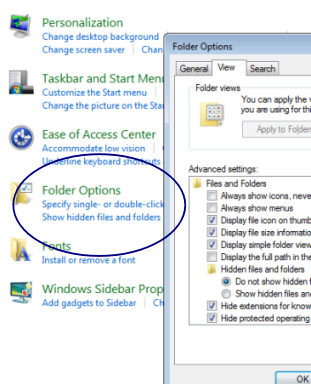Unlike a lot of the other industry analysts, I personally like Windows Vista. One area of the OS where I think Microsoft really dropped the ball, however, is the Backup and Restore Center.
For those unfamiliar with this feature, Microsoft did away with the NTBACKUP program that it has included with every version of Windows for more than a decade and replaced it with this new backup program.
The reason why I'm not a fan of Vista's Backup and Restore Center is because I feel it's been dumbed down to fit the needs of the computer illiterate. Unfortunately, the interface does not offer any advanced options for computer support, meaning you don't even have the luxury of choosing which files you want to back up. Your only options are to either perform a full system backup or back up various types of files (documents, pictures, music, etc.).
|
| 
|
|
|
| | The reason why I'm not a fan of Vista's Backup and Restore Center is because I feel it's been dumbed down to fit the needs of the computer illiterate. |
| |
|
|
| 
|
|
| 
|
| 
|
With Vista, Microsoft has also changed the file format used to store data that has been backed up. NTBACKUP has traditionally saved backed up data in a .BKF file. The Backup and Restore Center stores data in a .VHD file instead.
At first, this changed file format seems inconsequential given the other more dramatic changes to the backup application. However, the new file format is really something of a double-edged sword. The downside is that it prevents you from restoring data that was backed up using a previous version of Windows. Fortunately, the folks in Redmond haven't left us without options. Microsoft has a free utility that allows you to restore NTBACKUP data files to Vista, called the Windows NT Backup-Restore Utility.
Mounting a backup file as a virtual hard drive
The upside of the changed file format is that .VHD is the same file format used by Virtual PC 2005. In Virtual PC 2005, a VHD file is a virtual hard drive. That means if you perform a full system backup, you can mount the backup file as a virtual hard drive within Virtual PC. And it's simple to do. When you open the Virtual PC console, click the New button. That will cause Virtual PC to launch the New Virtual Machine Wizard. Click Next to bypass the wizard's Welcome screen, and you will see a screen with several options for creating a virtual machine. Choose the Create A Virtual Machine option, and click Next.
At this point, you must assign a name to the virtual machine you are creating. You can call it anything you want, but I recommend naming it something descriptive. After entering a name, click Next and you will be prompted to select the operating system used by the virtual machine. Choose Windows Vista from the list, and click Next.
You'll now see a screen asking you if you want to use the recommended amount of RAM or if you would like to adjust it. By default, Virtual PC allocates 512 MB to the operating system. This is barely enough to run Vista, so I would recommend increasing the memory allocation if you have the memory to spare.
After you finish adjusting the memory allocation, a screen appears asking if you want to use an existing virtual hard drive or create a new one. Choose the existing virtual hard drive option, and click Next. You will now be prompted to specify the virtual hard drive file that you want to use. Just pick your backup file, click Next, and you're good to go.
One caveat I should mention is that you can only mount a backup file as a virtual hard drive if the backup file contains a full system backup.
Why is this the way to go?
So the real question now is why you would want to do this. There are really two primary reasons. The first reason is that treating your backup file as a virtual hard drive is a great way of testing your backup. Server backups are tested all the time, but it's rare to test a workstation backup. This is partly because users often lack a spare machine to restore the backup to. You can't very well restore the backup to the machine that it was made on either because doing so would overwrite the system's current configuration. If something were to go wrong in the restore process, you would lose everything. Treating your backup file as a virtual hard drive gives you a risk-free way of testing your backup.
The other reason why it's nice to be able to treat your backup file as a virtual hard drive is that it gives you much more flexibility to restore data. As I mentioned earlier, Vista's Backup and Restore Center interface is extremely limited. If you have something specific that you want to restore, it is a lot easier to just mount the backup as a virtual hard drive and then copy the files you need to a network location or a removable disk then it is to fumble with the Backup and Restore Center interface.


